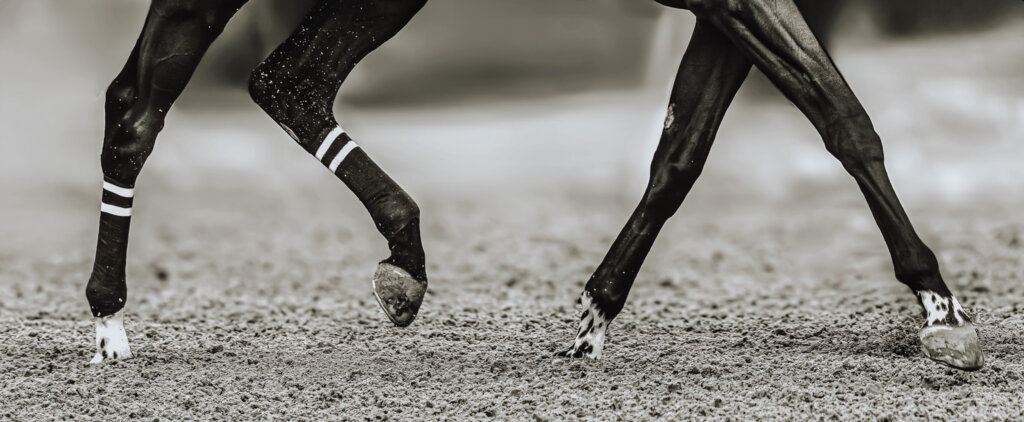Hitchens, Hill & Stover; Relationship Between Historical Lameness, Medication Usage, Surgery, and Exercise With Catastrophic Musculoskeletal Injury in Racehorses, Veterinary Epidemiology and Economics, Frontiers in Veterinary Science, 2018. Read the article.
Summary
Musculoskeletal injuries are a leading cause of death in racehorses, especially in California, where the incidence of catastrophic musculoskeletal injuries (CMI) is higher compared to other countries. Despite safety measures, the factors influencing these injuries remain complex. This study aimed to identify risk factors by surveying attending veterinarians of racehorses with CMIs and matched controls. The survey covered lameness, medication, surgery history, and exercise patterns. Lameness within three months before death was more common in Thoroughbred (TB) cases. Horses with a history of racing were less likely to receive systemic medications. Notably, unraced TB cases were more likely to receive systemic medications. Cases showed a decrease in racing intensity in the month preceding CMI.
The study investigated medication administration, revealing a high overall usage (73%). TB cases that had not raced were more likely to receive systemic medications, highlighting a potential influence of unraced status on medication patterns. While no specific medication showed a significant association, TB training-related cases were more likely to receive hyaluronic acid injections. The study analyzed surgery history but found no significant differences between cases and controls. In high-speed exercise history, TB cases had eased off racing intensity in the month prior to CMI. Lameness within three months of death and medication administration were identified as key factors influencing CMIs in TB racehorses, emphasizing the need for individualized management and vigilant monitoring for lameness.
Key Findings:
- Lameness within three months of death was prevalent, especially in TB cases.
- Racing history influenced medication patterns, with unraced TB cases more likely to receive systemic medications.
- TB training-related cases had a higher likelihood of receiving hyaluronic acid injections.
- Surgery history did not show significant differences between cases and controls.
- TB cases reduced racing intensity in the month before CMI, indicating a potential association between recent exercise patterns and injury risk.
The study had a response rate of 32%, potentially introducing bias. Detailed veterinary records are crucial for accurate analysis, emphasizing the need for comprehensive record-keeping. Further studies should consider including more specific lameness-related questions. Identifying risk factors is vital for minimizing musculoskeletal injuries in racehorses, and ongoing research is necessary to refine preventive measures.
This research sheds light on risk factors associated with catastrophic musculoskeletal injuries in racehorses, emphasizing the importance of lameness within three months of death and the influence of racing and medication history. The findings contribute to the ongoing efforts to enhance racehorse safety and could guide future interventions and management strategies in the racing industry.
Recommendations
- Important lessons and takeaways for the thoroughbred community from this study include:
- Enhanced Lameness Monitoring and Early Intervention: Racehorse handlers and veterinarians should implement more robust monitoring systems for lameness, particularly within three months of competition. Early detection and intervention for lameness can significantly contribute to preventing catastrophic musculoskeletal injuries (CMI). Regular veterinary check-ups, advanced imaging techniques, and close observation of gait abnormalities should be integral components of a comprehensive lameness monitoring program.
- Individualized Medication Management. Recognizing the influence of racing history on medication patterns, there is a need for more individualized and targeted medication management strategies. Unraced Thoroughbred (TB) horses, in particular, may require careful consideration regarding systemic medications. This recommendation involves a thorough examination of the health status, racing history, and specific needs of each horse before prescribing systemic medications. Stricter regulations and monitoring of medication use within the industry may also be warranted.
- Strategic Exercise Planning. The study suggests a potential association between recent exercise patterns and the risk of CMIs, as evidenced by a reduction in racing intensity in the month preceding the injury. Racing entities should consider adopting strategic exercise planning that carefully balances intensity, duration, and recovery periods. Individualized training programs, possibly incorporating data from lameness monitoring, can help mitigate the risk of musculoskeletal injuries by avoiding abrupt changes in exercise intensity.
- Comprehensive Record-Keeping Practices. To facilitate more accurate research and analysis, the horse racing industry should prioritize comprehensive and standardized record-keeping practices. Detailed veterinary records, including specific lameness-related information, medication history, and exercise patterns, are crucial for identifying risk factors and implementing targeted preventive measures. The development of digital databases or systems to centralize horse health information could enhance the industry’s ability to track and manage such factors effectively.
- Continued Research and Collaboration. The study’s limitations, including a response rate of 32%, highlight the need for ongoing research and collaboration within the horse racing industry. Further studies should aim for higher participation rates, and researchers should work closely with industry stakeholders to access more comprehensive datasets. Collaboration between veterinarians, trainers, regulatory bodies, and researchers can lead to a deeper understanding of risk factors, improved preventive measures, and ultimately enhance the safety and well-being of racehorses. Regularly updated guidelines based on the latest research findings should be disseminated across the industry to ensure a unified and informed approach to racehorse management.



